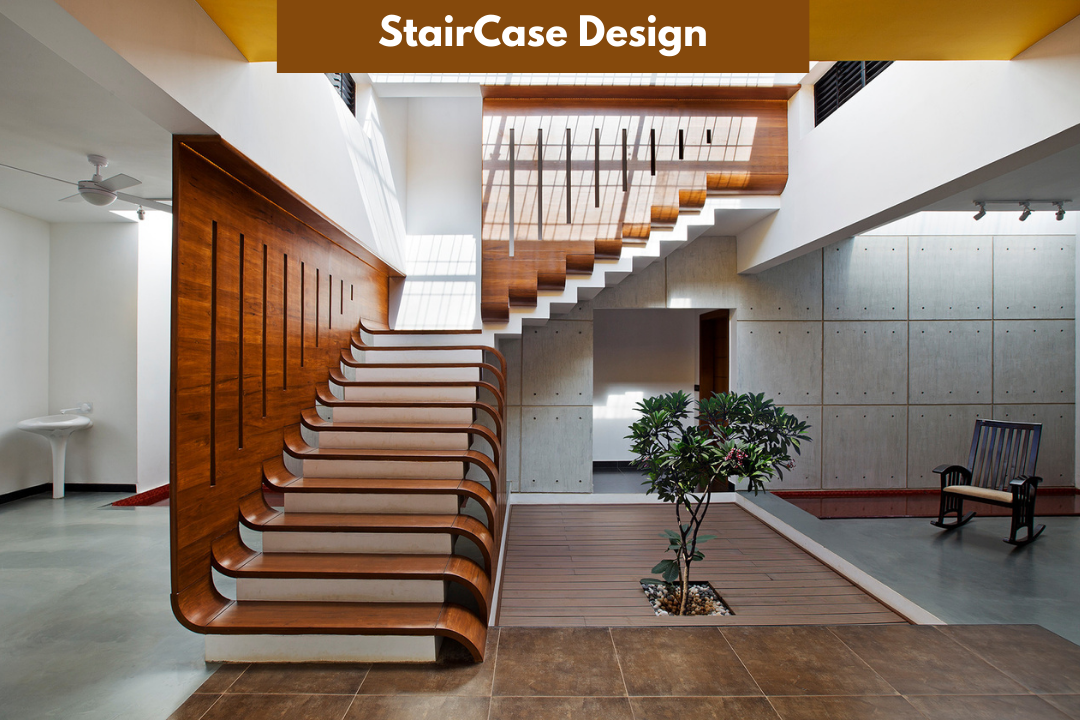
4 Types of Staircase Design
When it comes to remodelling or building projects, it is essential to consciously consider the types of staircase designs for home. Staircases are designed in endless combinations of different types and forms to best suit the space, aesthetic and function of the project. Different kinds of modern stairs design provide multiple kinds of visual appeal and take up different amounts of space.
According to any renowned interior designer in Kolkata, staircases can range from a straight voltage stare to a bifurcated to split staircase featured in elegant buildings and homes. Even the portions of a staircase can differ based on the style or function. Different kinds of staircase can affect both the visual appeal and function of the stairs.
The shape and type of staircase needs to fit the requirements and functions of a space and the staircase. The style depends on the design and architecture of the project. Keeping this in mind, we are discussing the four common types of staircases to help you pick the ideal type for your project.
1. Straight Staircases With Intermediate Landing
In this kind of straight staircase, the common landing breaks up a long expansion of stairs. Building codes are needed for this type of staircase when the height is more than 12 feet. An Interior design consultant can design a straight stair having intermediate landing applications which are generally utilised in large commercial buildings as contrasted to private houses.
These staircases can also be used for outer residential applications. It comes with some general benefits as straight stairs without the landing needed to be easy to build, easy to navigate and simple. The intermediate landing also comes with a resting point option for people going down and up the stairs.
One of the biggest disadvantages of street stairs having an intermediate landing is the space they need. If you have space constraints at your residential or commercial space, feel free to contact an interior designer in Kolkata from AD Kreative Forum. Our interior designers and engineers come with the required knowledge needed to maximise or minimise the length and height of the stairs as per the space needed.
2. Straight Staircases
These staircases are one of the most common and basic staircase designs which feature a linear flight having no change in direction. It is a classic style commonly utilised for both commercial and residential stair applications.
Because of the simple design, these staircases are the easiest to develop and they do not need any special support and facilitate easy installation of handrails and railings.
One of the biggest disadvantages of these states is that they come with the basic look but an Interior design consultant can make it visually appealing with open risers, metal cable railings and modern materials.
3. L-Shaped Staircases
Quarter turn stairs or L shaped stairs have a highlighting feature which is a 90 degree turn after the landing. The stairs proceed to continue right or left after the turn and the landing remains in the middle of the entire staircase but it also can be situated close to one end.
These are pretty common in commercial and residential buildings and generally used when the wall support remains on only one side of the stair. They are interesting and more visually appealing than straight stairs.
One of the biggest disadvantages of these stairs is that they need a support structure for the landing which is usually developed into the surrounding walls.
4. Winder Stairs
Winder stairs are quite similar to L shaped stairs, but rather than a flat landing where the turn is done these are continuous with triangular or pie shaped steps at the corner transition.
They are popularly witnessed as application as a second set of staircases in older homes. They require less space than other kinds of staircases. Due to the lack of landing, these can be difficult to navigate sometimes.
Reach out to AD Kreative Forum's interior design consultant for knowing more about staircases.








